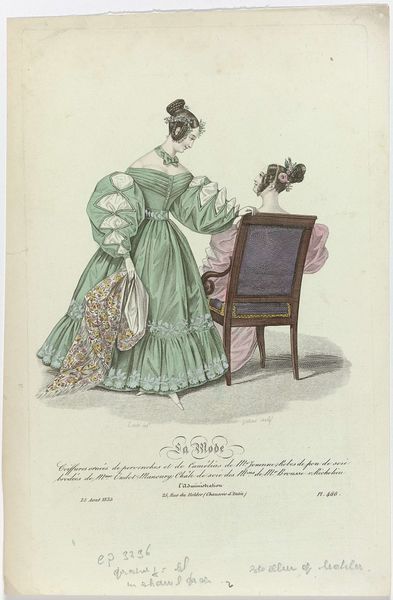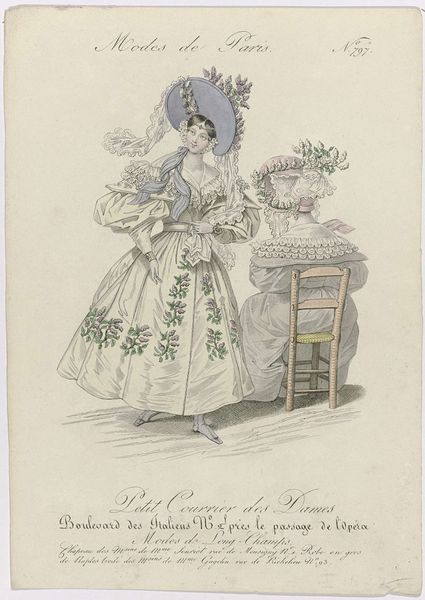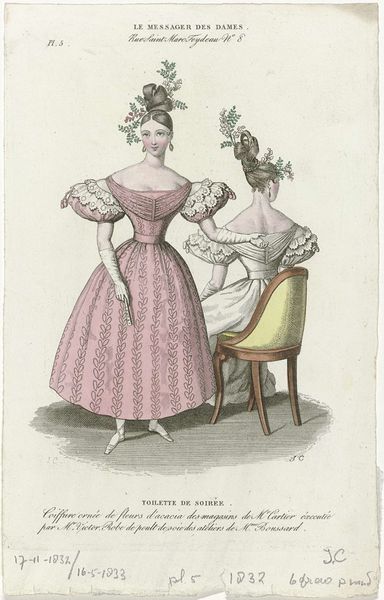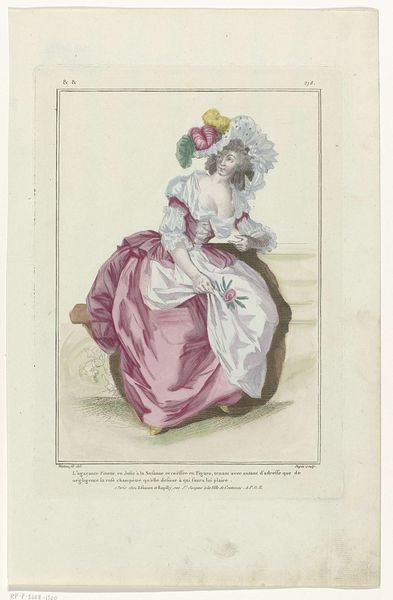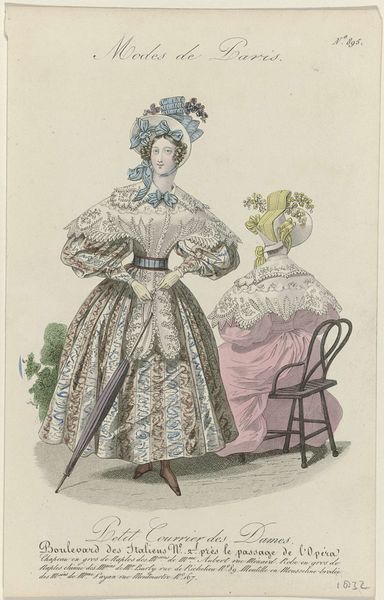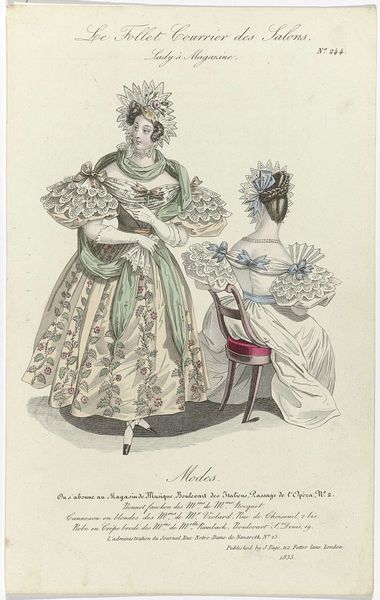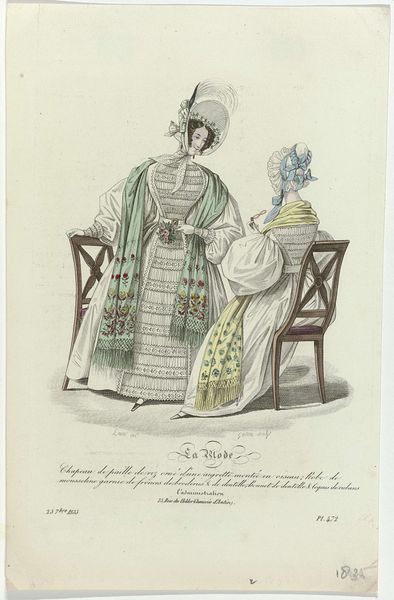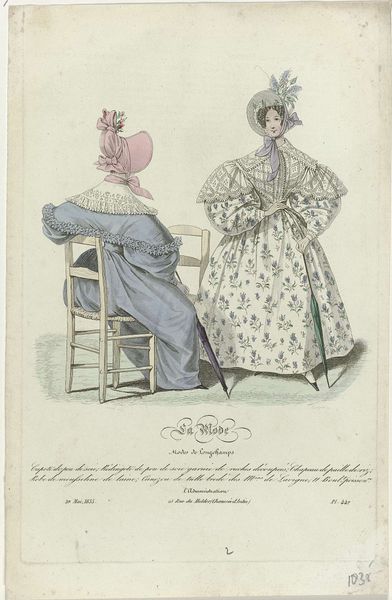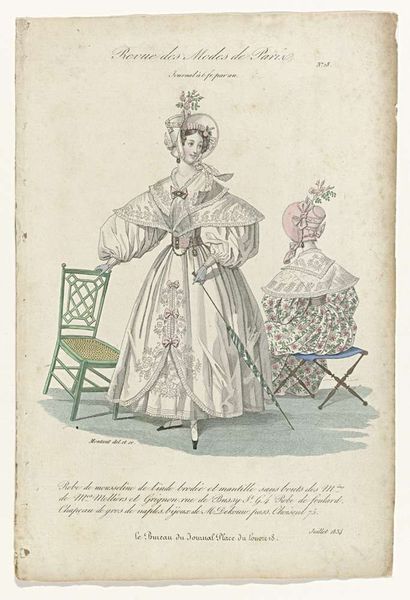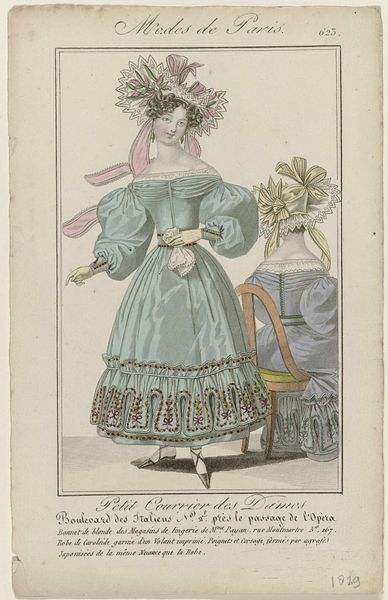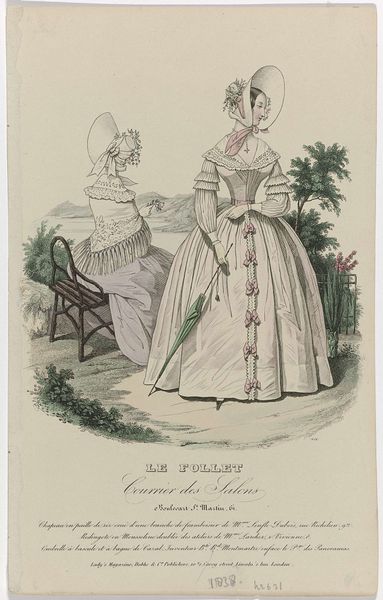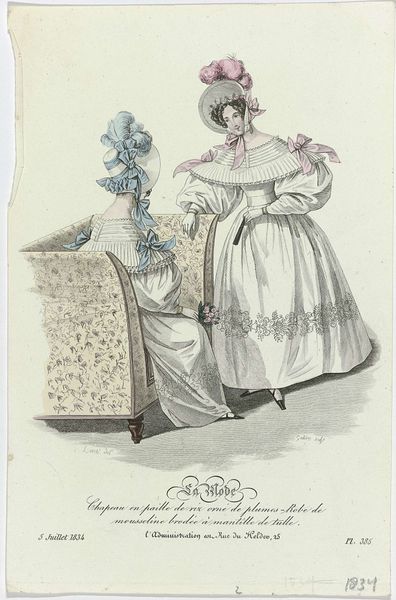
Journal des Dames et des Modes, Costumes Parisiens, 10 août 1833, (3102): Chapeaux de paille de riz (...) 1833
0:00
0:00
drawing, print, watercolor
#
portrait
#
drawing
# print
#
figuration
#
watercolor
#
romanticism
#
cityscape
#
watercolour illustration
#
genre-painting
#
dress
Dimensions: height 216 mm, width 141 mm
Copyright: Rijks Museum: Open Domain
Editor: This is a print from 1833, titled "Journal des Dames et des Modes, Costumes Parisiens," attributed to Louis Marie Lanté. It looks like a watercolor and drawing combination. It shows two women in fashionable dresses. I’m curious about how these fashion plates were produced, especially considering how intricate the dresses appear. What strikes you about it? Curator: This print offers a fascinating glimpse into the world of textile production and consumption in 1830s Paris. Think about the labor involved in creating the fabrics themselves - the woven silk, the embroidered muslin. The fashion plate is not just a pretty image, but evidence of complex manufacturing chains and a specific kind of conspicuous consumption. How might the material reality of producing these garments contrast with the romantic ideal these images project? Editor: That's a really interesting way to look at it. I was just seeing the surface – the pretty dresses. Considering the amount of detail, and how widespread fashion plates like these were, does this indicate a broader change in textile production methods at the time? Curator: Precisely! The demand created by these aspirational images fueled industrial innovations in textile production. The burgeoning middle class could, to some degree, participate in a version of elite culture through consumption. Consider the rice straw mentioned in the title of the piece related to making hats. This references not just materials but also agricultural systems. Editor: So, what might appear as simply documenting fashion trends also tells a larger story about labor, production, and even agricultural resources. Thanks! That gives me so much to think about. Curator: And hopefully inspires us to examine the hidden hands that shaped our material world.
Comments
No comments
Be the first to comment and join the conversation on the ultimate creative platform.
